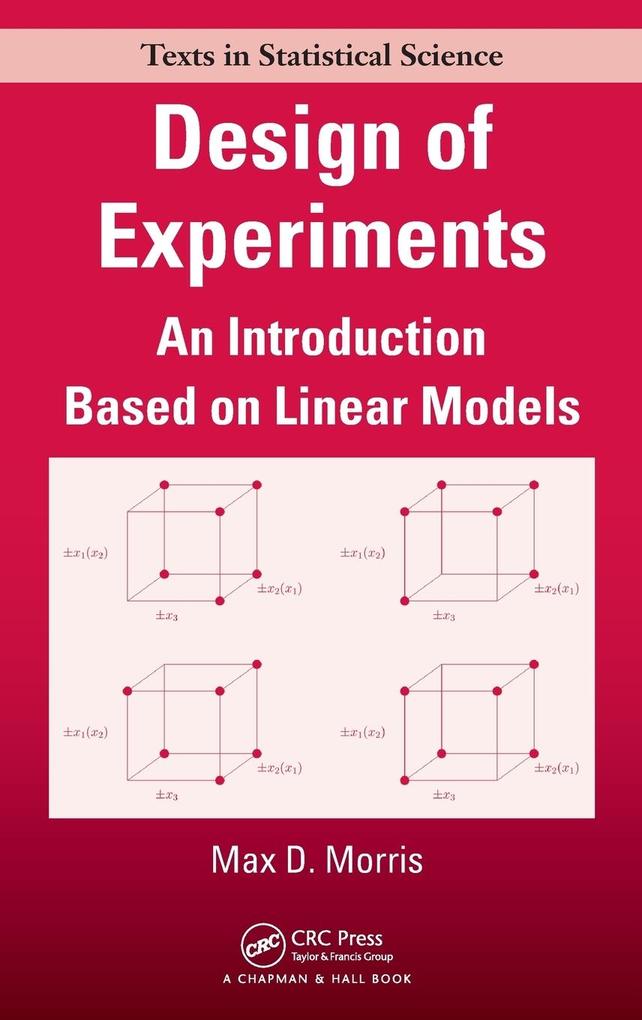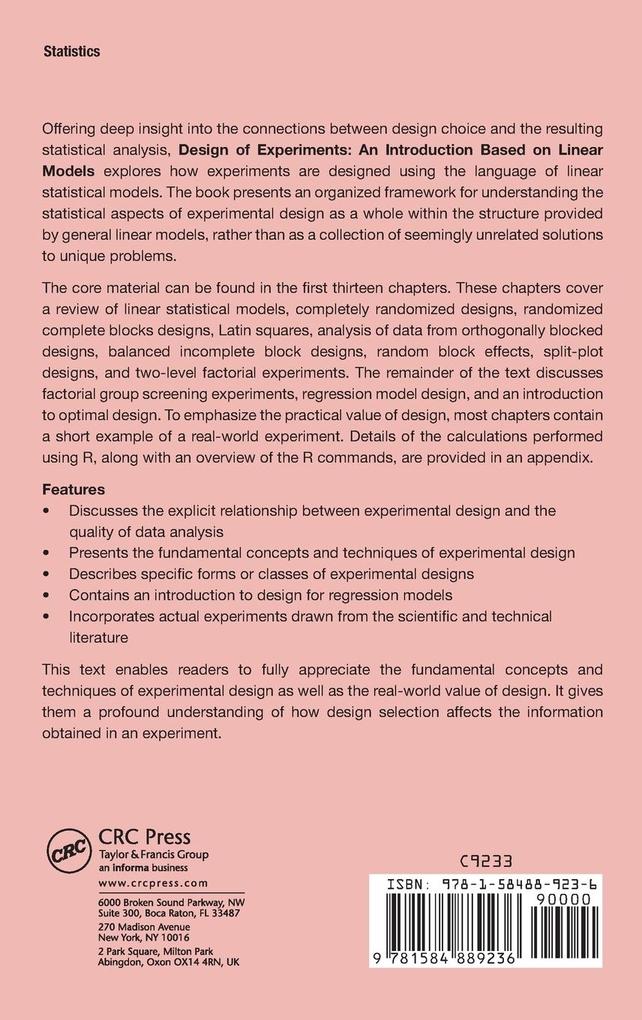
Zustellung: Mi, 20.08. - Sa, 23.08.
Versand in 7 Tagen
VersandkostenfreiBestellen & in Filiale abholen:
Offering deep insight into the connections between design choice and the resulting statistical analysis, this text explores how experiments are designed using the language of linear statistical models. It presents an organized framework for understanding the statistical aspects of experimental design as a whole within the structure provided by general linear models. The text describes specific forms or classes of experimental designs, incorporates actual experiments drawn from the scientific and technical literature, and includes many end-of-chapter exercises. Calculations are performed using R, with commands provided in an appendix. A solutions manual is available upon qualified course adoption.
Inhaltsverzeichnis
Introduction. Linear Statistical Models. Completely Randomized Designs. Randomized Complete Blocks and Related Designs. Latin Squares and Related Designs. Some Data Analysis for CRDs and Orthogonally Blocked Designs. Balanced Incomplete Block Designs. Random Block Effects. Factorial Treatment Structure. Split-Plot Designs. Two-Level Factorial Experiments: Basics. Two-Level Factorial Experiments: Blocking. Two-Level Factorial Experiments: Fractional Factorials. Factorial Group Screening Experiments. Regression Experiments: First-Order Polynomial Models. Regression Experiments: Second-Order Polynomial Models. Introduction to Optimal Design. Appendices. References. Index.
Mehr aus dieser Reihe
Produktdetails
Erscheinungsdatum
27. Juli 2010
Sprache
englisch
Untertitel
An Introduction Based on Linear Models.
Sprache: Englisch.
Seitenanzahl
376
Reihe
Chapman & Hall/CRC Texts in Statistical Science
Autor/Autorin
Max Morris
Verlag/Hersteller
Produktart
gebunden
Gewicht
728 g
Größe (L/B/H)
240/161/25 mm
ISBN
9781584889236
Entdecken Sie mehr
Bewertungen
0 Bewertungen
Es wurden noch keine Bewertungen abgegeben. Schreiben Sie die erste Bewertung zu "Design of Experiments" und helfen Sie damit anderen bei der Kaufentscheidung.



































